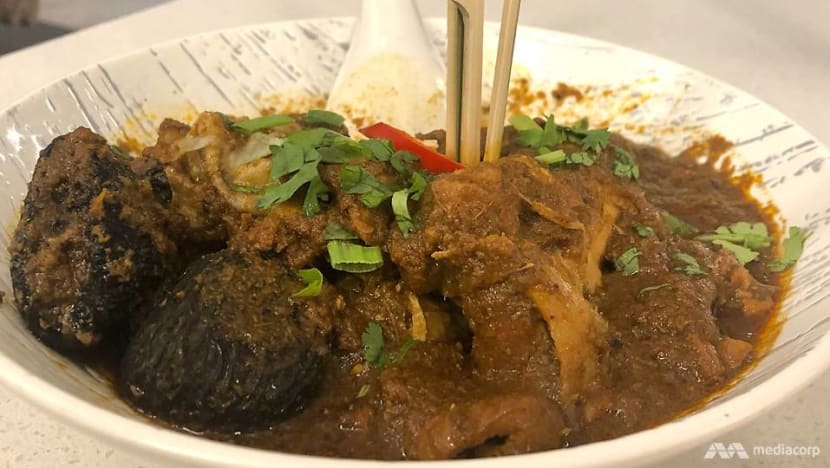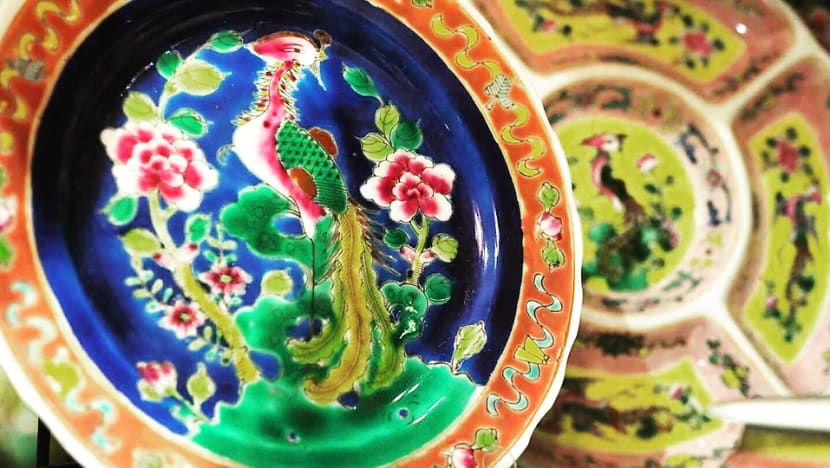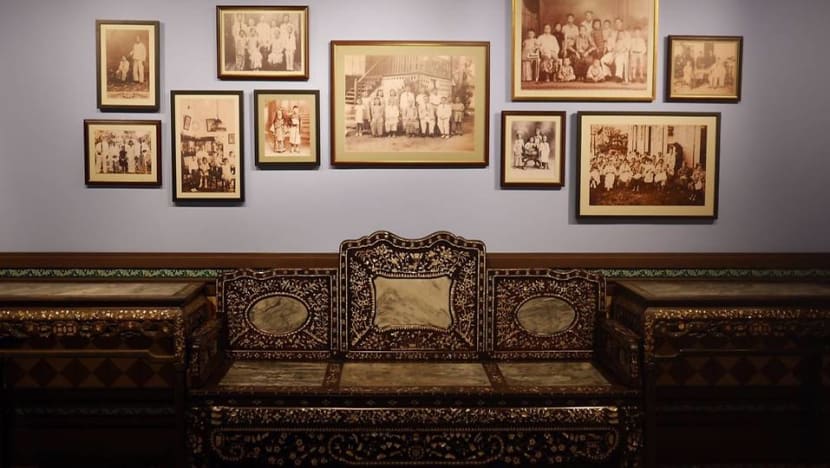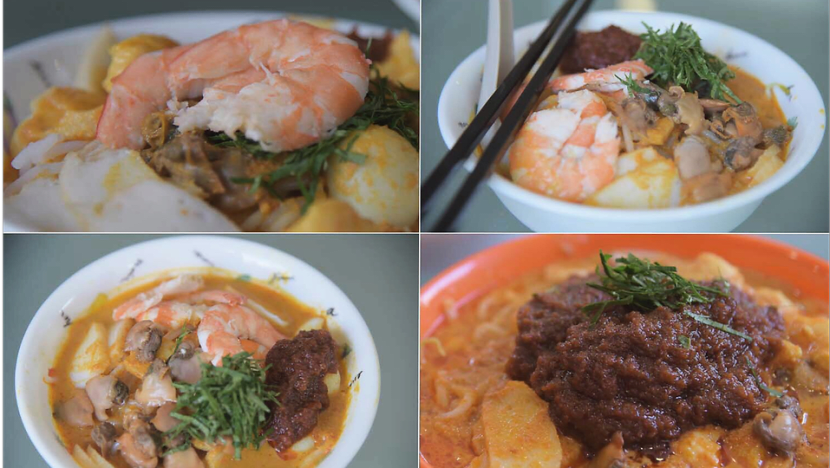commentary Commentary
Commentary: Are you Peranakan if you can’t cook ayam buah keluak?
Nyonya cuisine has been a bedrock of Baba culture but go easy on the modern Peranakan who can’t cook these heritage dishes, says renowned Peranakan author Josephine Chia.

SINGAPORE: Without a shadow of a doubt, every time my Peranakan family and circle of friends have a social gathering, food is the main attraction.
When you think Peranakan culture, your mind immediate wanders to the sights and smells of nyonya cuisine.
For the uninitiated, nyonya is the term for female Peranakans – when the women in the household took pride in pounding over 10 different spices to make rempah, a paste that eventually becomes garang assam (lemon grass fish) or sambal udang (spicy prawns) depending on the exact mixture, and set the long dinner table (tok panjang) for the family with dishes upon dishes, cooked with love over many hours slaving over a stove.
FOOD, GLORIOUS FOOD
Food is such a way of our life that you hardly ever hear a Jati (what we call a true, blue Peranakan) say she is on diet when we meet up for a meal.
Peranakans simply drip with descriptive words about food: Shiok lah! Sedap lah!
READ: Has the ‘soul’ gone out of modern Peranakans?
READ: Commentary: I am Peranakan not Chinese
These are expressions to register our heartfelt satisfaction with an array of Peranakan dishes, which have edged their way into mainstream Singapore cuisine, as much as those words have become standard phrases uttered by Singaporeans enjoying a good meal.
Whether ayam buah keluak, itek Tim, itek sio, babi pongteh or chap chye, all accompanied by a dollop of freshly pounded sambal belachan with a squeeze of lime to provide that extra oomph, there are fewer things that get Peranakans into a frenzy as a discussion rating Baba restaurants in Singapore.
Most of the time, Peranakans swear the best dishes are found in the homes of doting grandmothers who take painstaking efforts to wash, dry, cut open and pound the humble buak keluak – the centrepice of the most famous nyonya dish, whose unique family recipe is most Peranakans’ secret pride and joy.

ARE YOU PERANAKAN IF YOU CAN’T COOK PERANAKAN MAKAN?
While most Peranakans love to eat, especially to eat our heritage dishes, however, does it necessarily follow that all Peranakans can cook them?
I find this standard of judging ourselves somewhat harsh and reductive of great cultures with a long history.
Do we expect that all Hainanese people must know how to cook chicken rice? That all Malays must know how to make rendang? That all Indians must know how to cook rasum? Do all Scottish people know how to make haggis?
The art of enjoying eating a particular dish is not synonymous with a mastery over cooking.
We cannot assume that all Peranakans love to cook. In fact, we must also not assume that all Peranakans will love to eat ayam buah keluak, just as we cannot assume that all Malays will love rendang, Indians, rasum, or the Hainannese, chicken rice. I know for sure, that not all Scots like their haggis.
READ: The slow death of Peranakan cuisine? Or is authenticity overrated?
READ: Commentary: I am Eurasian and Singaporean – same same
However, you may be the richer for it to be able to tell apart your lengkuas (blue ginger) from your bunga kantan (torch ginger flower) and how to magically bring the various ingredients together in such a way that it will produce a truly delectable dish that gets lips smacking and people talking about it long after the dish has been devoured.
A CULTURE BASED ON GATHERING
Peranakans in Singapore are very fortunate. Our island is small enough to congregate easily with fellow Peranakans. We have the opportunities to get together fairly frequently to celebrate our culture and heritage.
We can practice some of our many customs, or talk about it so that it remains in the forefront of our memory. No doubt us seniors live in the hope that more Anak Peranakan (our Peranakan youths) want to participate and be inspired to carry on our traditions before we pop our clogs.
But if you ask me what images are conjured up in my mind when someone asks me what being Peranakan is like, I would point to our gatherings - for our Malam Joget, our Peranakan Ball, or Chakap Chakap Baba at the Peranakan Association of Singapore.
The first is the occasional flamboyant dress-up evening in colourful, resplendent Peranakan outfits with bling-bling jewellery to joget or dance the night away. You might be amused to know that our Babas (Peranakan men), are permitted to happily flaunt their style too – in shiny brooches, glittering shirts and sarongs.
KEEPING THE LINGO ALIVE
The other part of being Peranakan is language. To chakap is to speak. Chakap Chakap Baba is our attempt to keep our unique Peranakan patois alive by making conversations in our own language.

In my growing-up years, we were not compelled to study Mandarin, so the majority of us studied Malay in school which is the parent language of our patois, incorporated with Hokkien words.
Of course, much has been lost over the years but we soldier on. We run language classes to recall our special lingo and sing-song lilt.
These various activities make us an inclusive group to some degree. It’s this inclusiveness which acts as a tremendous advantage to keep our culture strong and alive.
The birth of the Peranakan Museum, Baba House and other private museums, not to mention the media influence of The Little Nonya series, all help to showcase a culture that used to be quietly practised in the privacy of homes.
FOOD IS A HUGE PART OF OUR CULTURE BUT NOT THE ONLY THING
To suggest that a Peranakan who can’t cook ayam buah keluak cannot be considered a Peranakan is far too sweeping in my opinion. Cooking is only one aspect of a layered heritage and culture.
In the olden days, girls generally did not go to school or out to work. Learning to cook, embroider and make a home were her priorities.
These days, young women have to hold a full-time job, and be wife and mother. Naturally, cooking has to take a backseat.
READ: Commentary: The Dragon Mother-in-law and the First Son Syndrome
READ: Commentary: What’s wrong with being a single woman?
Culture has to evolve with the times. If we’re too rigid, set too many rules, enforce irrelevant customs, we will scare away the young. Then they will reject our heritage. That is when all is lost.
THE CHEATER’S WAY OF MAKING AN EXCELLENT AYAM BUAK KELUAK
Having said all that, let me end with a tip to make an excellent ayam buah keluak like mothers used to make in this modern age without the old hassle.
This dish is the caviar of Peranakan cuisine. It’s an acquired taste. The richness of its sauce comes from the buah keluak nut which grows on a kepayang tree, now a heritage tree in Singapore.
It has a hard, grooved shell outside and the inside is soft and black. However, it is laced with hydrogen cyanide so be very aware. Most of the work involved is preparing the fruit to remove the poison.
Growers plucked the nuts and bury them in ash for months. Then they are cleaned, ready for use. But the cook still has to soak the nuts for days before use, scrub them down and change the water each day.

Before you cook it with your chicken pieces, you have to crack each nut on its lip, scrape out the black inside, pound it with some gula Melaka, then re-insert it back into the nut. The process is time-consuming.
The cheater’s way is a modern development. Nowadays growers market the nuts, already taken out of its shell. So, what you get is a clean black fruit.
You can buy these ready-to-be-cooked nuts at Tekka Market and Geylang Serai. No more hard work and messing about cleaning and scrubbing the shell.
You pound five or six of these and mix the paste with your chicken pieces. I find that it does not compromise the taste at all.
But hardliners still prefer the sauce with the nuts still in their shell.
When eating they may insist on using a special spoon to dig out the black insides and understandably so. This worship of the fruit is a practice well shared by Malays and Indonesians who use this nut to make rawon sauce.
The right measure of fresh chillies, candlenuts, asam and coconut milk will turn this odd-looking nut into one of the most unique and mouth-watering dishes in Peranakan cuisine.
I hope this cheat will encourage young Peranakans and aspiring cooks to try their hand at making the dish.
But don’t beat yourself up if you’re a struggling Peranakan unable to cook ayam buak keluak. And be nice to the nyonya bahru (young Peranakan) who might try their hand at it but can’t whip up a dish as good as nenek’s (grandma).
Josephine Chia is author of many books, most famously Kampong Spirit: Gotong Royong, Goodbye My Kampong and the children’s edition, Growing Up in Kampong Potong Pasir, and most recently, Big Tree in a Small Pot.












